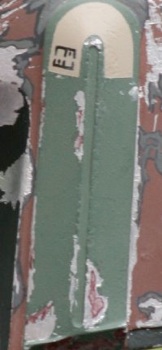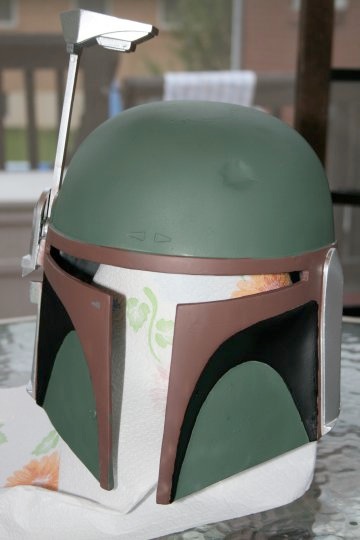Today’s topic is Does White Glue Work On Felt. Obviously, you can find a great deal of Does Gorilla Glue Work On Felt-related content online. The proliferation of online platforms has streamlined our access to information.
There is a connection between the Glue For Felt To Wood and Does Gorilla Glue Work On Felt information. more searching has to be done for Best Glue For Felt To Yarn, which will also be related to Does Hot Glue Work On Felt.

21 Things You Should Know About Does White Glue Work On Felt | Glue For Felt To Felt
- If you are using spray adhesive, you will need to cover the areas you don’t want glue to land on with removable tape. We recommend masking tape for this task as it’s easy to remove and doesn’t leave residue behind. You can find masking tape by bands like Scotch, Tarvol, Jak, and more, but any brand should suffice. - Source: Internet
- CA glue is often used in repairs, to make models, and to develop or fix props in the entertainment industry. In his book Every Tool’s a Hammer, fabricator and MythBusters TV host Adam Savage describes CA glue as “the soul of the special effects industry.” He warns users to avoid letting these quick-adhering glues bond to your fingers or drip—they require a deft and steady hand. - Source: Internet
- Spray-on glues can be permanent, repositionable, acid-free and photo-safe, and/or water-resistant. These adhesives are often used to bond materials like paper, fabric, and foam board, and extra-strength formulations can join heavier materials. Use these glues in a well-ventilated space. - Source: Internet
- Glues continue to evolve. In the medical realm, an innovative bio-glue can close bleeding wounds in seconds. In nanorobotics, naphthalene gas is used to seal layers of ultrathin silica. Geckskin is a strong, removable adhesive inspired by the sticky properties of gecko feet. Researchers are exploring how to use spider silk and human blood to bind moon and Mars dust in order to make space glue and concrete. - Source: Internet
- You will need a foam brush to apply your glue evenly when not using a spray. Foam brushes are inexpensive and easy to find in most hardware and paint stores. We recommend purchasing them new so no contaminants will get in the glue. - Source: Internet
- To avoid inadvertent sealings, try super glues in gel form and with precision nozzles. Peterson says she uses a super glue gel from Gorilla Glue in her artworks. “It dries fast but [takes] long enough for me to swab the extra away with a Q-tip.” - Source: Internet
- If you need to cut your felt to a specific size or shape, you will need to gather your templates together before you get started. You can get felt templates online and at the local hardware and craft stores. They have a large selection of shapes and sizes for any project. - Source: Internet
- Whether you’re joining metal, paper, or fabric, it’s important to know which glue to use. This overview of popular glues includes recommendations from artists. Always read adhesive labels on toxicity, applications, drying times, and cleanup, and be sure to test them on a practice surface. - Source: Internet
- Obviously, felt will be the main component of this project, but felt Is available in many different qualities, and the type you choose will depend on the project. A lower quality felt can stretch and tear easily, especially when in contact with glue or other liquid. If you are doing school projects or something simple to gain experience, an inexpensive polyester felt is probably fine. However, if you are refurbishing a pool table or protecting your furniture, we recommend purchasing a higher quality 100% wool felt. - Source: Internet
- Wheat paste, made from wheat flour and water, is another old-school glue, similar to diluted white glue. It has long been implemented in collage, papier-maché, and bookmaking and to adhere advertisements and street art to walls. Rabbit skin glue has been in use since the Renaissance as a bookmaking adhesive and sizing (a material that seals canvas or wood before painting). While the skin is a by-product of other industries (rabbits are not killed specifically to make art adhesives), some artists still prefer to avoid animal-derived primers. - Source: Internet
- Artist Pamela Blotner, who sculpts wood, usually uses “yellow carpenter’s glue—Elmer’s or Titebond.” She says, “I was trained that these adhesives are far better for the wood and make a more thorough bond as they are soaked up into the grain, rather than just lying on top of it.” Renowned luthier and musical consultant Galeazzo Frudua also uses Titebond, among other adhesives. He says this type of glue is good for guitar making “because it resists high temperatures and is sandable” when dry. - Source: Internet
- Fabric adhesives come in many forms, including spray, liquid, tape, or iron-on. When choosing a fabric glue, be sure to consider the weight of your fabric and whether the bond needs to be water soluble or heat resistant. A subcategory of fabric adhesives are sealants that prevent cloth and thread work from fraying. Mixed-media artist Bonnie Peterson uses Fray Chek for this purpose. - Source: Internet
- Although Super Glue is a registered trade name, it is also the generic name (lowercased) for cyanoacrylate adhesives (CA). These quick- and clear-drying waterproof glues bond wood, ceramic, leather, metal, glass, and some plastics; generally, they are not appropriate for foam plastics unless specifically labeled as such. Super glue withstands pulling forces but is not impervious to impact or twisting. - Source: Internet
- Wood glue, another PVA, is often yellow, though some brands are white and dry clear. Wood glue, also called carpenter’s glue, becomes tacky more quickly than most white crafting glue, and it is rigid and sandable when dry. Glued surfaces should be clamped for about 30 minutes, and wood glue generally cures in 12 to 18 hours. Some wood adhesives are intended only for indoor applications, while others are waterproof and designed for either exterior or interior use. - Source: Internet
- Mixed-media and animatronic sculptor Karl Heinz Jeron says he relies on “white crafting glue in the bottle, like the ones [made by] Pritt.” Marco Gallotta, an artist who employs paper cutting, printmaking, and other techniques, says his current preference is a white glue called Lineco White Neutral Ph Adhesive. “I like working with it because it holds well and it stays clear.” - Source: Internet
- You are going to need a good pair of scissors to cut your felt. You don’t want to use dull scissors because it will lead to a jagged edge. We recommend a large pair of sharp precision scissors. You can find them by Scotch in most hardware stores and even the grocery store. - Source: Internet
- And many traditional, nature-based adhesives have stood the test of time. In addition to white glue, paper artist Gallotta uses melted beeswax to fuse cut-out sheets of paper. “Besides making the layers of paper adhere, the wax acts as a natural protection for the artwork, and it creates a nice texture,” he says. - Source: Internet
- Wax paper will allow you to place weights on your wet glue to apply pressure. Reynolds is probably the most popular, but any brand will do. You don’t need to look for any special kind. - Source: Internet
- Weldbond is another popular adhesive for mosaic making, and, as a multi-surface PVA, it also appeals to the DIY and woodworking crowd. Bob Clagett, DIY instructor and founder of the website I Like to Make Stuff, says, “Right now, I’m really liking Weldbond glue. It sticks to a lot of different materials and dries clear.” - Source: Internet
- White glue is typically used to join lightweight materials like paper, cardboard, and cloth, often during craft-making. It is usually made of polyvinyl acetate (PVA), as are many air-drying glues (as opposed to reactive adhesives). It takes about one hour to set and a day to cure. White glue can be cleaned up with soap and water—it’s generally not water resistant. “School glue” is a type of white glue that bonds porous materials only and is usually nontoxic. - Source: Internet
- You will need to mark your felt so you know where to make cuts. A pencil is the best solution because it will not leave any permanent marks behind. A pen or marker will. Any ordinary number two pencil will work fine. - Source: Internet
 Following are some suggestions on where to begin your search for data on Glue For Felt To Wood:
You should try to find does white glue work on felt-related information from reputable places. Libraries, online resources, and even paid journalists all fall under this category.
Following are some suggestions on where to begin your search for data on Glue For Felt To Wood:
You should try to find does white glue work on felt-related information from reputable places. Libraries, online resources, and even paid journalists all fall under this category.It’s crucial to be aware of the many electronic media sources available when researching Glue For Felt To Felt, such as Google and YouTube. You may also get info about Best Felt Glue on social media sites like Facebook and Twitter.
Video | Does White Glue Work On Felt
It’s crucial to read to examine the authenticity of each source in order to acquire the greatest information regarding Best Glue For Felt To Plastic. You’ll learn more about What Glue Will Do? Here Are the Best Kinds of Adhesive for Different Arts, Crafts, and DIY Projects after watching the films included in this post, which come from a variety of different sources. Information on a wide range of topics may be easily accessed via the internet.
## Notable features of Best Glue For Felt To Plastic include:- Does White Glue Work On Felt
- Does Gorilla Glue Work On Felt
- Best Felt Glue
- Glue For Felt To Felt
- Does Hot Glue Work On Felt

Because there are so many websites and forums that provide information about What Glue Will Do? Here Are the Best Kinds of Adhesive for Different Arts, Crafts, and DIY Projects, it should not be difficult for you to locate the data that you want.
The majority of individuals are accustomed to taking a completely different approach when it comes to obtaining information regarding Best Glue For Felt To Plastic. This makes it possible to take a more in-depth look at the information that is available about Does Hot Glue Work On Felt and how it might be utilized.

methods for producing information displays about Glue For Felt To Wood that are both aesthetically pleasing and functional. In commercial and marketing settings, as well as for the purpose of conveying information on Does Gorilla Glue Work On Felt, they are useful tools to have. Because of this, we also supply some photographs relating to Best Glue For Felt To Yarn.
In summing up, I’d like to say that this article offers a general summary of Does Hot Glue Work On Felt. Also covered are How to Glue Felt to Wood: Step-by-Step Guide (with Pictures) and Best Glue For Felt To Yarn, which serve as a benchmark for evaluating the depth of your understanding of Best Glue For Felt To Plastic.